Pan Am Safety Cards
The two safety cards to the left must date from the late 1950s or early 1960s. What is unique about both cards is they do not indicate an aircraft type. When Pan Am first placed orders for jet aircraft they ordered both the Boeing 707 and Douglass DC 8. Both aircraft had identical exit placements and I suspect that the cards were designed to be used in either jet.
The card with pictures on the cover is 4 panels and is coded "9253-7006" and has direction in English, French, German & Italian.
The card with just the logo on the cover is 11 pages and does have picture illustrations inside. This card is coded "9253-7011B" and has direction in English, French, German, Italian, Portuguese, Spanish, Chinese & Japanese.
In the 1960s Pan Am changed the style of safety cards again. The newer cards were pamphlet like with multiple pages of emergency guidelines in multiple languages. The last few pages were photographs of passengers in the cabin, exiting slides and sitting in life rafts. This format was extremely comprehensive and informative.
To the right is the Boeing 707 version of that safety card (blue background) and code "9243-7477" on the lower right back panel. The Boeing 720 version of the card (gray background) has code "9243-7478." The 720 was a smaller and slightly faster version of the 707. Pan Am operated only 9 of this aircraft type so the card is very rare. Both cards have instruction in English, French, German, Italian, Spanish, Portuguese, Chinese and Japanese.
Pan Am introduced the B727 in the mid 1960s to The Caribbean, Central America and internal German markets. The tri-jet showed the famous tail exit on the cover and has an all blue background (seen on the left). This card is coded "9243-7479" on the lower right back panel. The 747 safety card to the left with the gray, white & blue background is coded 9243-7508. This card also shows a date of 2-75 on the back panel. Both safety cards includes the same thorough images and multi language text as those above.
The 747 safety card to the right was produced as part of the launch campaign of the aircraft and has a date marking of 9/70. Its multi page format in blue, white & green give the same thorough detail of text and images as the cards above. The card is coded "9243-7508A" and has the same 8 languages as above.
In 1980 with the acquisition of National Airlines Pan Am changed the covers of its safety cards to show drawings of the aircraft type on the cover. The title of “Just in Case…” remained as did the 6 panel format and inside illustrations. With the acquisition a "mixed" fleet was created and several versions of 727-100 and 727-200 safety cards had to be created to satisfy Federal Aviation Administration requirements.
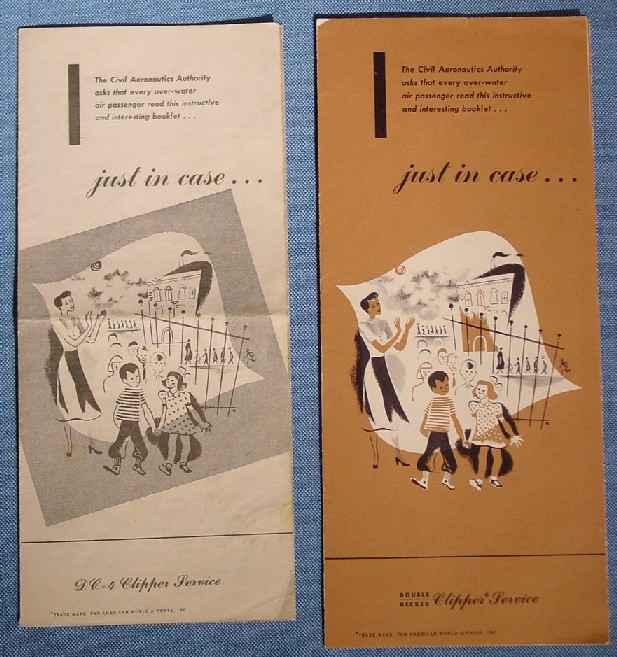
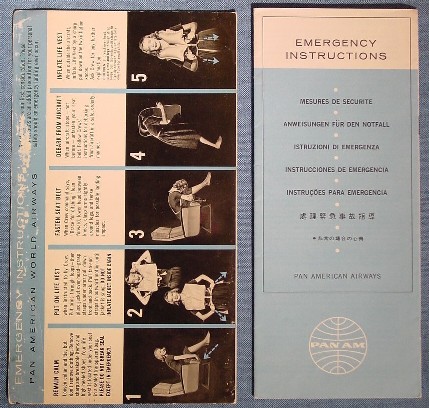
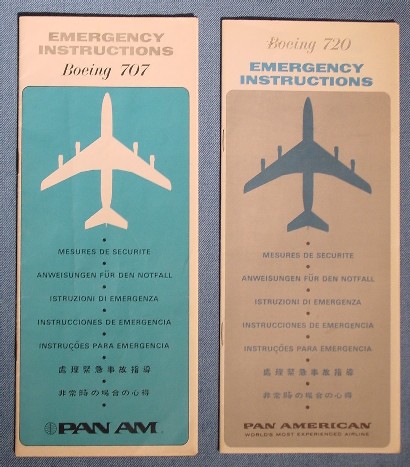
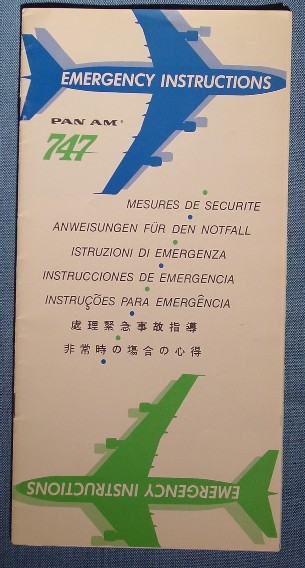
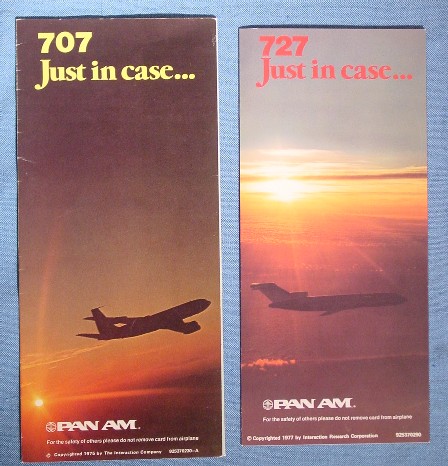
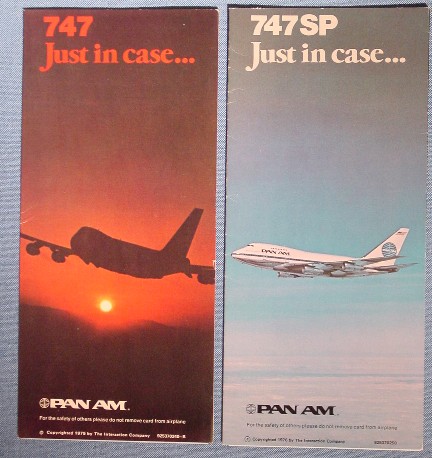
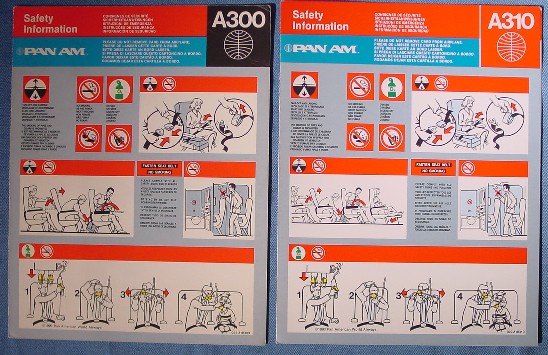
In 1984 Pan Am changed the style of safety cards again. They were re-titled “Safety Information” and though they remained 6 panels the cards opened in the front with the left flap significantly smaller than the right. These cards were produced on very thin paper and would quickly look tattered in the seat back pockets. The 727-200 and 737-200 versions are seen below.
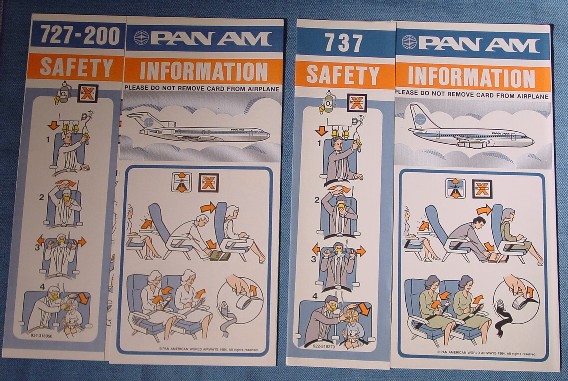
In 1990 Pan Am introduced the last version of safety cards. The title “Safety Information was retained in a four panel format. All four panels were the same size and to avoid a tattered look these cards were produced on thicker paper. Below are the A300 and A310 versions of this card.
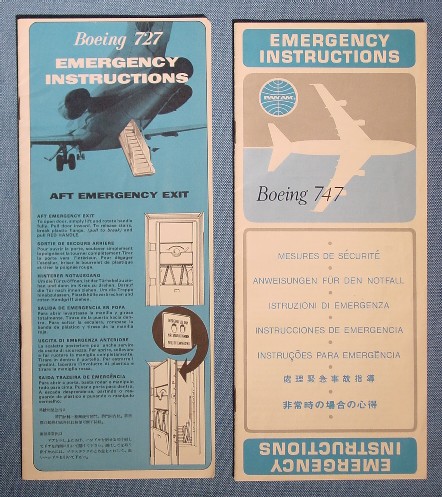
I’m not sure what year Pan Am began to carry passenger safety cards. To the right are examples of early safety cards from the DC 4 (gray) and Boeing B377 “Stratocruiser” (brown). They are from the late 1940s or early 1950s as the DC 4 joined Pan Am’s fleet in 1945 and the Stratocruiser joined in 1949. These safety cards are six panel with a lot of text. The tone is subtley humorous to keep from frightening passengers. Not much information on emergency procedures is given instead stating "your crew will advise” and “follow crew instructions." The cards show basic aircraft diagrams which indicate primary and emergency exits.
Below is a 6 panel safety card for the L-049 Constellation. This card is written in both English & French and is the earliest I have seen with in depth information on emergency procedures. There is not date on this card but would have been produced between 1945 -1952 when Pan Am retired the Constellation from the fleet.
To the right is a single sheet safety card for the DC6 Based on the graphics at the top I know this card is from the mid-1950s. The card is in English on the front and French on the back. The coding on the lower left is "9241-0359a."
Below is another safety card for the Boeing 377 Stratocruiser. This 6 panel card from 1956 is titled "Just in case" and gives much more detail on emergency procedures than the brown card at the top of this page. The coding on the back panel is "F-30-3813.
The "Just in case" title for safety cards would be used again by Pan Am in the 1970s & 1980s.
In 1975 Pan Am began to change the look of it’s safety cards and placed in-flight pictures of the aircraft type on the cover. These safety cards are all 6 panel and have drawings in lieu of text and pictures inside to illustrate safety procedures. This change saw the return of the "Just in Case" title which had not been used since the 1950s. Below are the 4 aircraft type in the fleet during this era.
The date and coding appear on the front of all these cards. The 707 card comes in two sizes. The larger card (11 x 5 inches) is dated 1975 and coded "925370230-A." The smaller card (10 1/2 x 4 3/4 inches) is also dated 1975 and is coded "925370230-B." The 727 card (10 1/2 x 4 3/4 inches) is dated 1977 and is coded "925370290." The 747 card also comes in two sizes. The larger (11 x 5 inches) is dated 1975 and coded "925370240-A." The smaller (10 1/2 x 4 3/4 inches) also dated 1975 and coded "925370240-B." The 747SP card (10 1/2 x 4 3/4 inches) is dated 1976 and is coded "925370250."
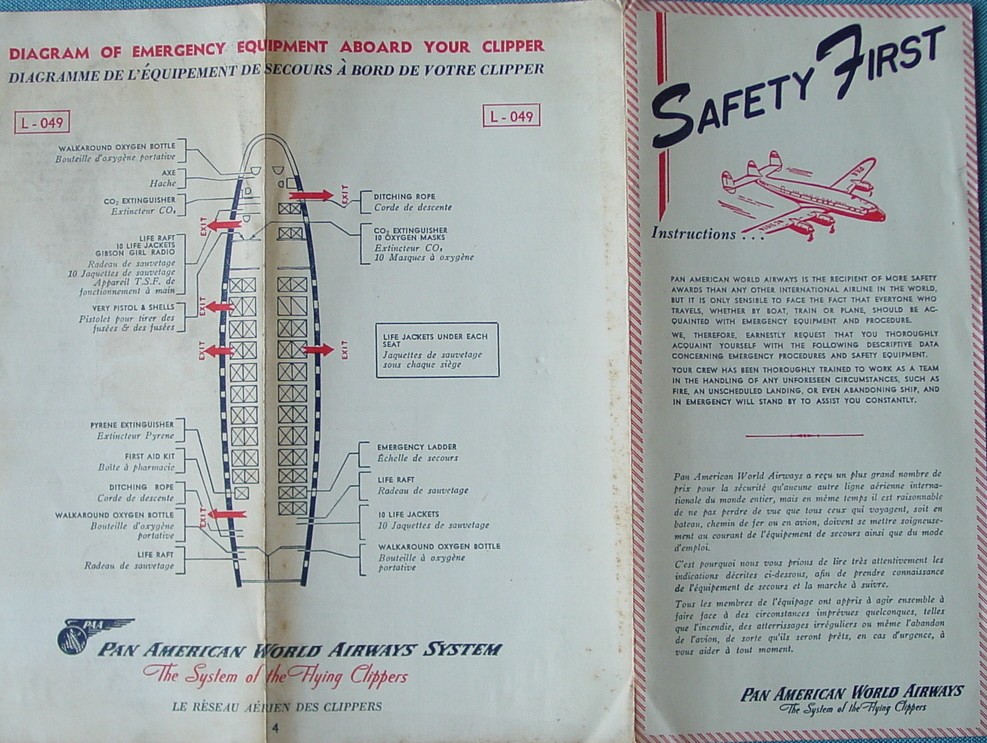
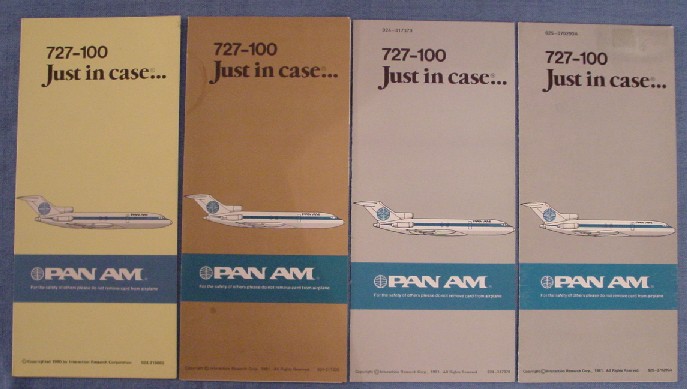
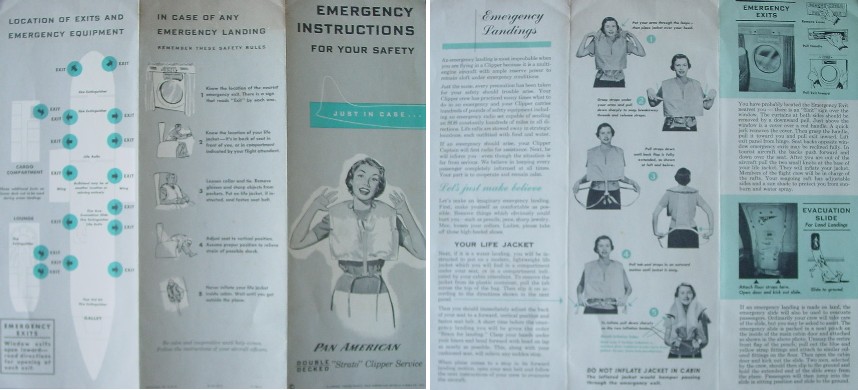

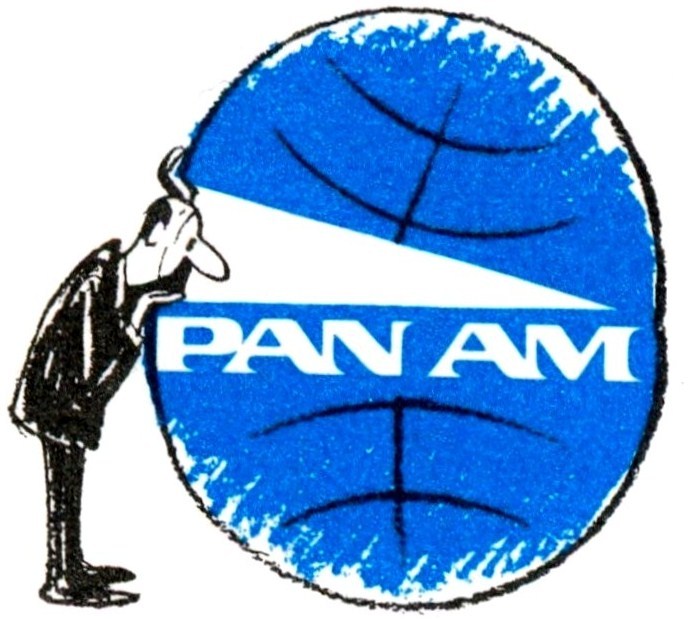
everythingPanAm.com
The Virtual Pan Am Museum